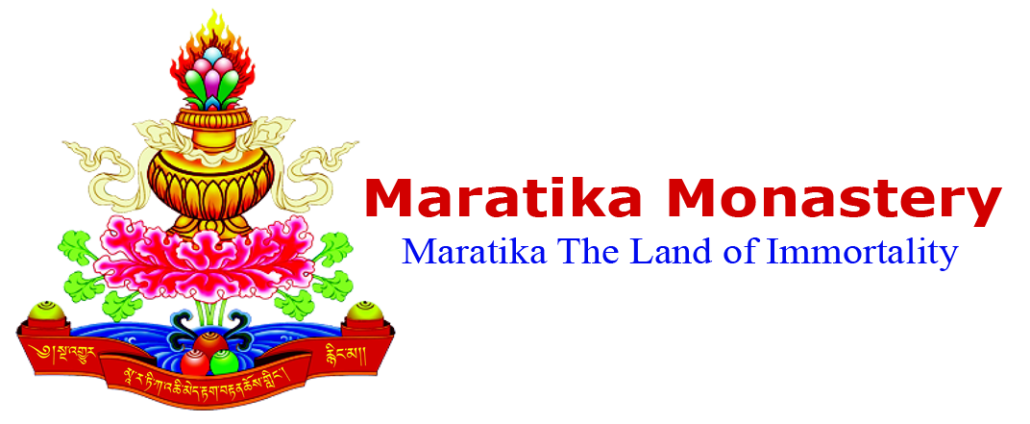Maratika or ‘Chi ba mthar byed’ in Tibetan means “eliminates from death”, and is known as Halesi or “literally astonishing”. The place is rich in history, mythology and sacred geology despite its great isolation, it is a major holy place for both Buddhists and Hindus. For Tibetan Buddhists in particular, it is the site of immortality, one of the six supreme pilgrimage sites in the world.It is the place where the great master, the second Buddha Padmasambhava and Dakini Mandarava obtained the realization of immortal life. Maratika was also blessed by the family of three protectors Manjushri, Vajrapani and Avalokitesavara. For many years the sacred caves of Maratika have been a very important pilgrimage destination for Buddhist seeking to engage in the long life practices. Due to its historical connection with Padmasambhava the Lotus Born Guru, and the family of the three protectors, it is particularly sacred within the Rime or Non Sectarian movement in Tibetan Buddhism in general and within the Vajrajana vehicle in particular.
Legend has it that Guru Padmasambhava first subdued the demons of the Lord of the death, before engaging in a three month long meditation retreat in the central cave at Maratika, on the practice of the deity Amitayus, the Buddha of boundless life. The aforementioned deity appeared directly to Guru Padmasambhava, bestowing the Abhisheka of long life, and Guru Rinpoche accomplished the level of Vidyadhara, beyond death and birth, the signs of which are still visible in the cave to this day.
The greater region is made up of three hills or holy mountains, the central smaller of which is known as Avalokitesavara mountain and houses the two main caves itself, above it next to the caves entrance is Maratika Chimey Takten Choling monastery. On either side of the Avalokitesavara hill stand Vajrapani hill to the south, and Manjushri hill to the north ,making up the trio of the “family of three protectors” or Rig sums gonpo in Tibetan.
To highlight the importance of this holy place His Holiness the Dalai Lama has stated “due to the accumulation of white virtue, just through seeing, hearing, remembering and touching this place the two obscurations of beings will be quickly purified, one will be looked after by the all knowing one (the great master Padmasambhava) from the Ugyen and easily attain the state of omniscience.
To quote His Holiness Dudjom Rinpoche “ Indirectly devoted and fortunate people in the future will get a link merely by visiting this place, making prostration, worshipping or respecting it and they will have the obstacles of this life pacified and all their wishes fulfilled and ultimately they will be accepted by Guru Padmasambhava and his consort and attained this certainly without deception.
Any one who makes connection through either seeing or hearing about Maratika to enjoy the fact of a long life in these dark age when the life span is short and diseases are many. If other devoted people could give according to how they feel, as a drops of water gathered in the ocean, they will definitely obtain a share of the siddhi and merit of long life”.
MEANING OF “MARATIKA”
Maratika literally means ‘Chi ba mthar byed which translates as “the cave of making an end to or destroying death”. Because Padmasambhava achieved a level of power beyond birth and death in Maratika, the name of this place became known as “Maratika”. Several termas such as those by Nyang-rel Nyima Özer, Sangye-lingpa, and others include references to “Maratika”.
MEANING OF “HALESHE”
When the Tibetan King Trisong De’utsen was building the glorious Samye Monastery, what they constructed during the day was destroyed by demons during the night. King Trisong Deutsen sent his minister, Dorje Dodjom, to India to invite Padmasambhava , the great tantric practitioner who holds the power of all the Buddhas of the past present and future. Padmasambhava, accepting the King’s invitation was returning to Tibet with Dorje Dodjom when passing through Nepal they arrived at Haleshod, which literally means “to describe the experience of astonishment”. Stopping here to take rest, the minister was so surprised just by being on the site of this holy mountain, that he turned to Guru Rinpoche and asked: “why is this mountain so astonishing?” Padmasambhava revealed to him the Outer, Inner and Secret explanations of the astonishment concerning the sacred place, thus the name of Maratika came to be known as “Haleshe”, “Haleshod” or “Haleshen” in the Tibetan language and gradually became “Halesi” in local language.
For further information regarding the history of Maratika please see (ma ra ti ka-i gne yig rig azin aja lus grub pa-i gsang lam) Pilgrims’ Guide to the Rocky cave of Maratika The Supreme Holy place of Immortality, written by Ven. Ngawang Jigdral Chokyi Wangchuk, The english verson will available soon.
